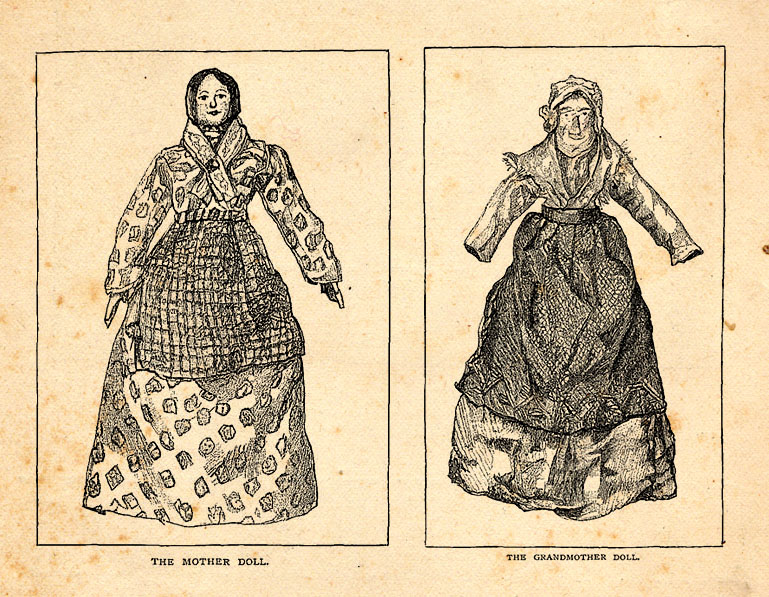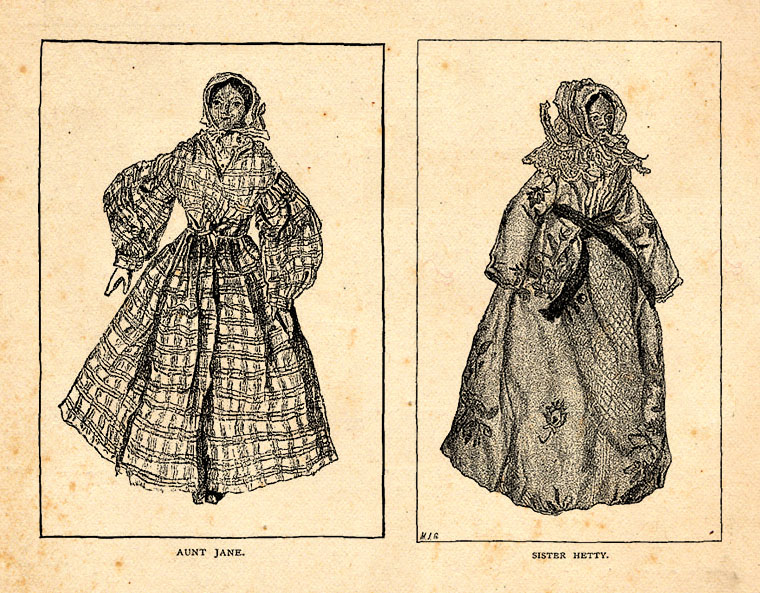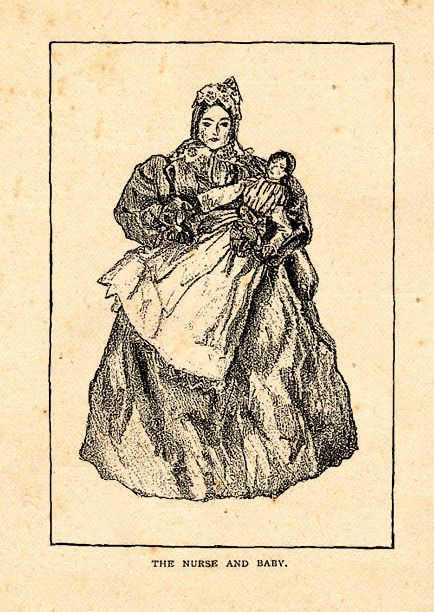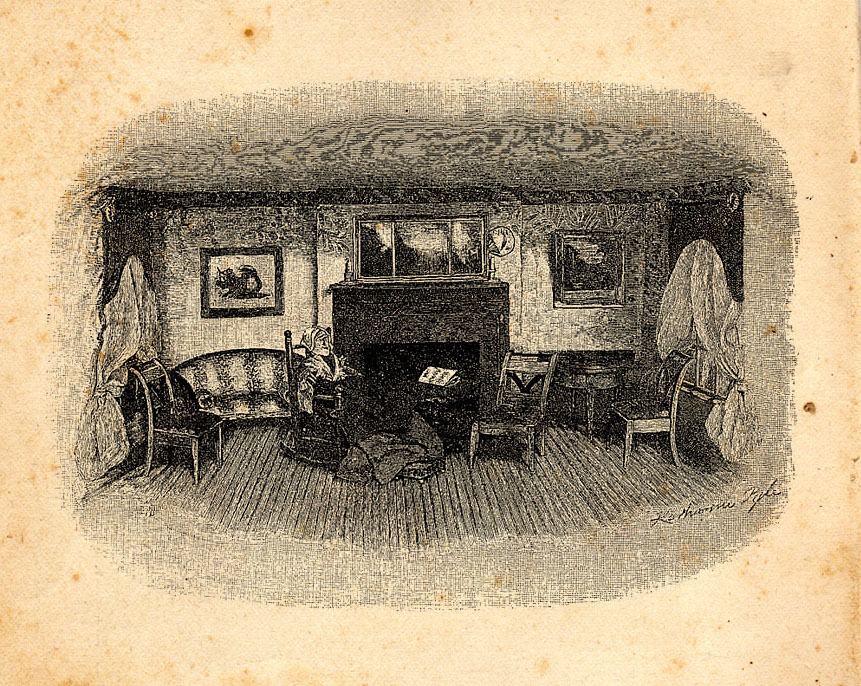Every house has a story – even a doll’s house. This nostalgic story of a doll-house owned by a little girl named Ann, which was built around 1814, gets told in an article found in the St.Nicholas magazine published 1889. The author of the story was a woman named Katherine Pyle.
Seventy-five years ago, a little brother and sister had a play-house in a cupboard. It was a sheet-closet; and on the upper shelves were piled great rolls of home-spun linen, with bunches of lavender between their smooth folds to make them smell sweet. The two lower shelves belonged to the children, and there, for a while, their toys and boxes were neatly arranged side by side, and pictures were tacked up on the walls.
Boys are not so careful and orderly in their ways as little girls, and by and by the brother began to store all kinds of queer things in the play-house: bits of stick fit for whittling; an old dog-collar for which he had traded his jack-knife; pieces of string and fishing-line; a rusty key; and many other odds and ends, such as little boys love to gather together in their comings and goings.
It worried the little girl to have all these things littered about on their neat shelves; and the mother, as she sat in her cushioned rocking-chair, with her basket of sewing at the nursery window, saw it all, and felt sorry for the little daughter. So, one day after the children had started for school with their books tucked under their arms, and two red apples and some gingerbread in their baskets, she put on her bonnet and shawl, and went down the street to the carpenter’s. She described to the carpenter exactly what she wanted, and he said:
” Yes, yes ; yes, ma’am. A slanting roof, and six windows ; yes, ma’am. And a wooden standard ; yes, ma’am. I will have it done for you next week.”
And next week the carpenter’s boy brought something to the house on a wheelbarrow, while the children were away at school.
It was a play-house : a large play-house, a playhouse with two chimneys and real glass windows. It was two stories high, and almost more than the boy could wheel.
The mother had it carried up to her room and put behind the high-post bed, where it was hidden by the white valance. All that morning she was busy tacking and snipping and pasting and cutting; and all the while the children were at school, thinking of nothing at all but their lessons.
It was Saturday and a half-holiday, and about noon the children came home.
Upstairs they clattered and burst into the nursery, and then stood quite still in the doorway and looked. The nursery was very quiet, with the chairs and tables in their places, and two squares of yellow sunlight on the carpet, but there, in the middle of the floor, stood a wonderful little house, painted to look just as if it were built of bricks, with chimneys, and glass windows, a slanting black roof, and a white door. It was the little house that the carpenter’s boy had wheeled home on the wheelbarrow ; but now it was furnished, and had black and yellow silk curtains at the windows, carpets on the floors, and one of Ann’s own dolls was looking through the little square panes, for it was her home.
There was a key in a keyhole above the first-story windows of the doll-house. The children turned it, and the whole front of the house swung open, windows and all. Then they could see just what was inside.
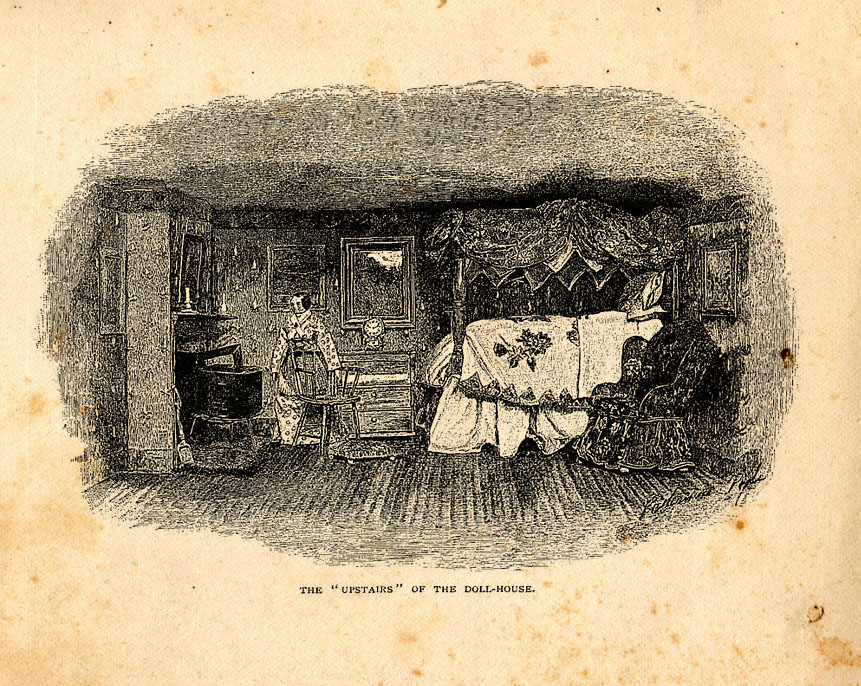
There was an upstairs and a downstairs. Upstairs there was a mantelpiece and fireplace, a round black tin stove, and a high-post bed with curtains and a valance. There was a clock standing on a chest of drawers under the looking-glass. There were pictures about the room, and a cosy stuffed chair stood by the bed for Grandmamma Doll to rest in when she came upstairs out of breath.
Downstairs there was another fireplace, a round center-table decorated with pictures, and a sofa. And there was Grandmamma Doll herself, sitting in the green rocking-chair. There was a folding table that was just the thing for dollies to sit around while they drank a social cup of tea.
While the little boy and girl were looking at the play-house their mother came in, and stood smiling on them from the doorway without their seeing her.
That is the story of the real doll-house.
Yes, of a real doll-house,– a dear old-fashioned doll-house.
As one opens the front of it a faint, delightful odor of long ago breathes forth, like the ancient fragrance that haunts the boxes and piece-bags of kind old ladies.
As one looks in the looking-glasses one thinks of all the little girls whose chubby faces have been reflecting there, – Ann, in her short-waisted, long-skirted dresses; little nieces of hers in pantalettes and pig-tails. And now others, with crisp white aprons and bangs, peer in with eager curiosity at the old-time doll-house.
What fun they have had with it! How many times, on stormy days, when the rain beat on the nursery windows, and swept in whitening gusts over the wet trees on the lawn, the front of the dollies’ house has swung back, and little folks have played happily with it for whole mornings at a time! How often they have pretended a dolly was ill, and have laid her in the fresh, white-sheeted feather-bed under the chintz curtains; and then, while the nurse warmed up her food on the tin stove, Grandmamma Doll has had her green rocking-chair brought upstairs, and sat at the bedside and rocked and rocked, while the other dolls went about very softly, and the nurse kept the baby quiet below.
Not long ago there was a fair in a certain city to raise a fund for a hospital. There, in a room specially set apart for them, were dolls by dozens and dozens, all standing in rows and dressed in their best; for the one that was the finest of all was to receive a prize. And there, too, among all the fine dolls and in the midst of the noise and glare of light, stood the dim old doll-house.
The key had been turned in the lock and the front had been swung back. There was the round tin stove, the high-post bed, and clock; there was the folding table, and the sofa, and there were the silk covered chairs.
A crowd of faces peered in, – old and young; people pointed and smiled; it was a noisy crowd, and the yellow-faced dolls, in their old fashioned dresses, sitting in the quiet rooms, looked out strangely with their black wooden eyes, through the odor of long ago.
My face, too, peered in upon that old Quaker doll-family. I too wondered and pointed with the rest, and then I thought how other children, old and young, might perhaps care to look through my eyes into those faded rooms. So I drew pictures of it all, and afterward I made portraits of the dear jointed and rag dolls, and here they are.
